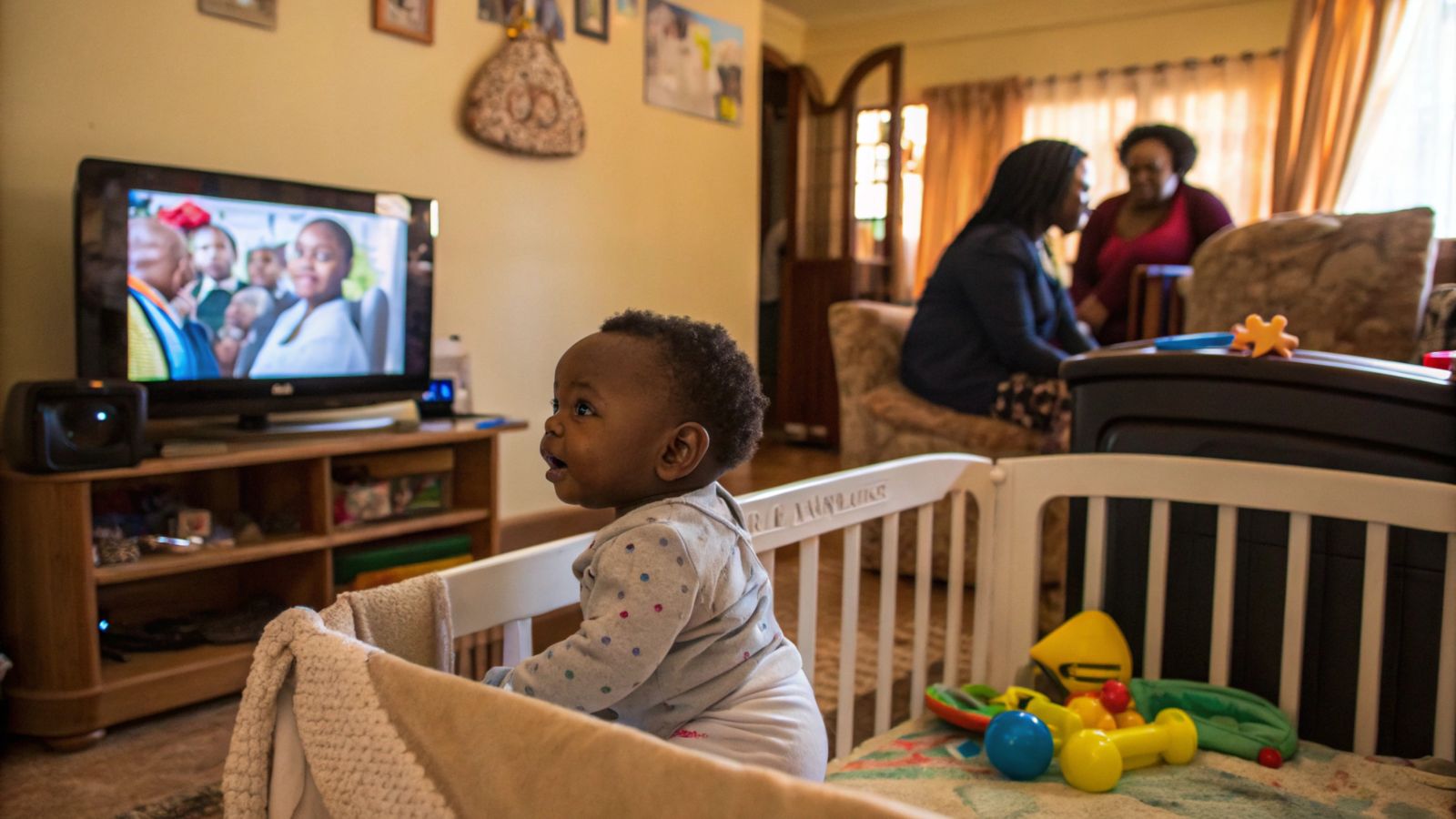How do these babies become multilingual from a very young age? 🗣️
Follow us on Google News (click on ☆)
A team of researchers, led by psycholinguists Prof. Dr. Natalie Boll-Avetisyan and Paul O. Omane, conducted an empirical study involving 121 babies aged three to twelve months in Accra, Ghana. They discovered that these children are exposed to between two and six different languages, with an equivalent number of caregivers regularly attending to them.

Contrary to common beliefs, language learning is not limited to direct interaction with a single caregiver. Ghanaian babies also receive indirect linguistic input through radio, television, or surrounding conversations. This diversity of linguistic exposure is a defining feature of their daily environment.
The findings, published in the journal Cognitive Development, show that English is primarily acquired indirectly, while local languages such as Akan, Ga, and Ewe are transmitted directly by caregivers. This distinction highlights the importance of both types of input in language acquisition.
The researchers emphasize the need to adopt a broader perspective in language studies. Varied cultural environments, like that of Ghana, offer a more nuanced understanding of multilingualism. The study sheds light on the richness of the linguistic environments in which children grow up.
This research opens new perspectives on the importance of multilingualism in child development. It shows that linguistic diversity is not only a dynamic reality but also a fundamental element of children's identity and social structure.
The implications of this study are vast, suggesting that educational policies and child development programs should take into account the linguistic richness of the environments in which children grow. This could lead to more inclusive and adaptable approaches to multilingual realities.
What is direct and indirect linguistic input?
Direct linguistic input refers to verbal interaction between a child and their caregivers, where communication is intentional and interactive. This includes conversations, songs, and stories told directly to the child.
Indirect linguistic input, on the other hand, comes from non-interactive sources such as television, radio, or overheard conversations. Although less personalized, this input plays a crucial role in exposing children to a variety of languages.
Why is multilingualism important in child development?
Multilingualism offers children increased cognitive flexibility, enhancing their ability to switch between tasks and solve problems. This is due to the need to juggle different linguistic structures.
Growing up in a multilingual environment strengthens children's social and cultural skills. They learn to navigate varied social contexts and understand different cultural perspectives.
Multilingualism is a valuable asset in a globalized world, offering professional and personal advantages. It fosters greater open-mindedness and better intercultural understanding.